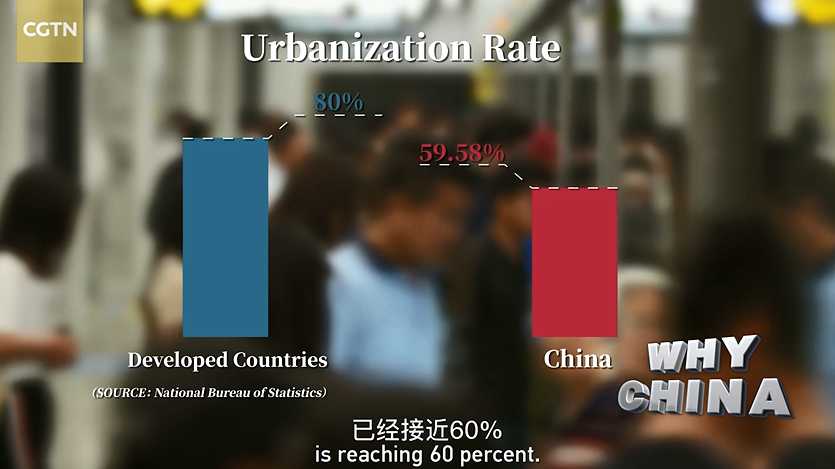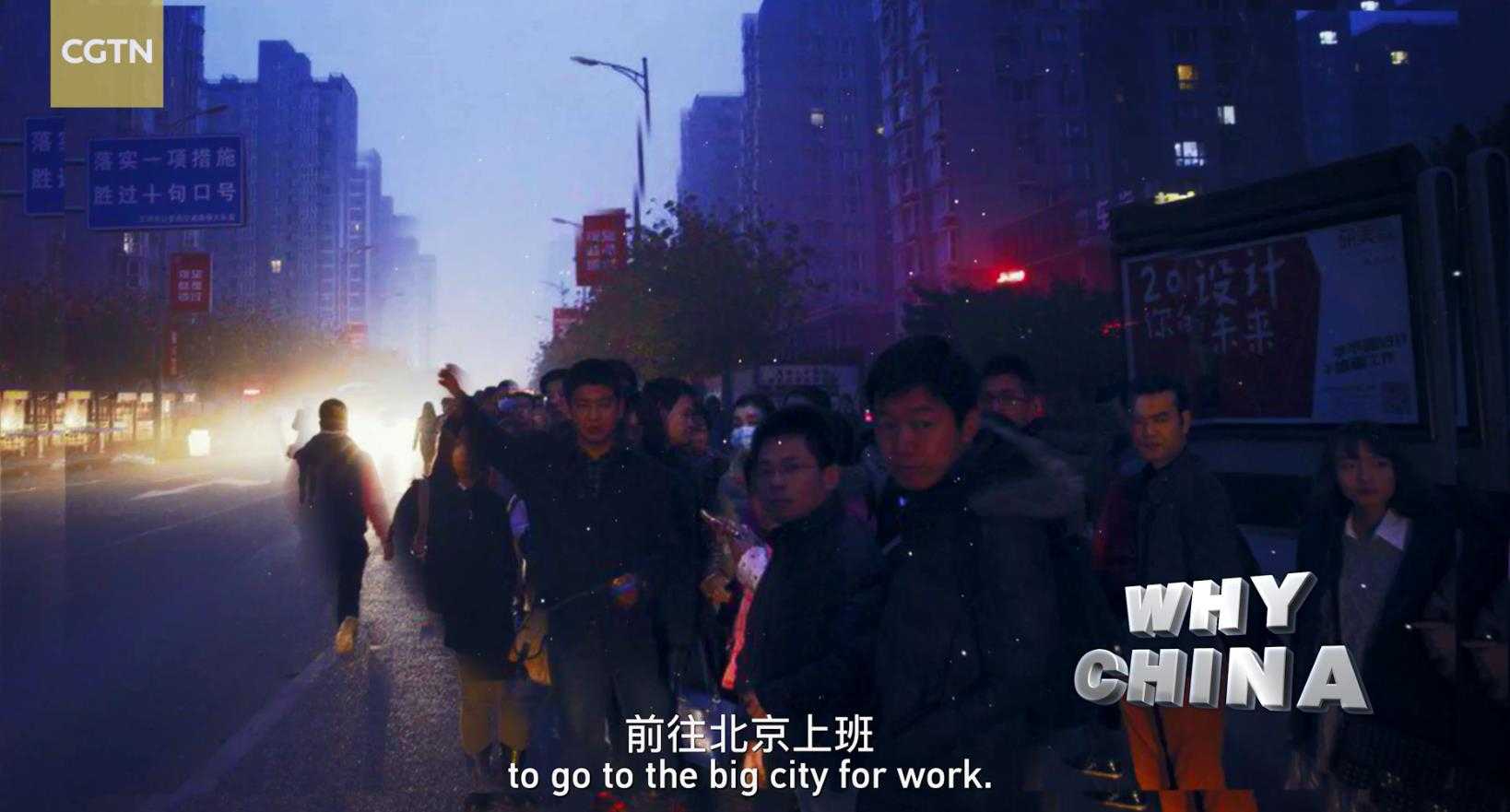the speed, scale and quantity of urbanization in china are enormous.
forty years ago, less than one-fifth of china's population lived in cities, and the rural population was almost eight times that of the city. but today, the percentage of china's urban population is reaching 60 percent. the number of cities has grown from 193 in 1978 to 672 in 2018.

developed countries and china's urbanization rates. /cgtn screenshot
big city would also bring problems
"when you have cities, you have great things happen, but you also are going to have a lot of problems," said tom pauken ii., a beijing-based reporter and observer of asia-pacific affairs.
yanjiao is a town that belongs to sanhe city in north china's hebei province, which sits on the border of beijing and hebei. every morning, nearly 300,000 people take the bus from sanhe to beijing for work, with some of them spending five hours on the road each day.
"overcrowding is an issue for beijing, and for many mega cities around the world, like london and new york," said yang tao, the executive deputy director of future city lab in china academy of urban planning and design. "because when people go to big cities, they try to get more opportunities, they want to have adventure in the big cities."

people waiting at a bus stop in yanjiao, sanhe city, north china's hebei province. /cgtn screenshot
'shrinking city' – good or bad?
when people move to big cities, they leave their towns behind. some smaller cities or towns are called "shrinking cities" due to decreases in population.
"what you have to realize is that shrinking cities are not a bad thing," said pauken ii, adding that the opportunities are in western china because that's where people can engage in greater development.
tao echoed pauken's thinking, saying that medium-sized cities can have a better economy, because people can easily have access to jobs, good living conditions, and good internet connections in the age of information.

development of digital economy in china. /cgtn screenshot
counter-urbanization
china is developing new urbanization, and counter-urbanization is a key focus on solving china's urban problems.
longgang town in eastern china's zhejiang province was originally five small fishing villages. the villagers raised funds to build the country's first farmers' town.
in 2018, longgang town's population exceeded 380,000, and its total output value was about 4.2 billion u.s. dollars. it ranked the 17th among the top 100 chinese towns for its overall strength, and has achieved the transition from being a "farmers' town" to an "extra-large town" and finally a "new city."
"for each city, if we have a different role and function, they can be connected with each other." yang believes the diversification of cities and towns will promote the country's economic development. "urban cooperation is a big machine to successfully realize the economic perspective. we need to produce multi-center structures, rather than a single center."

hong kong-zhuhai-macao bridge. /vcg photo
metropolitan areas and megalopolises
china is building new modern metropolitan areas and megalopolises.
in xiongan new district, which is over 100 kilometers from beijing, a group of top new high-tech companies from the chinese capital and a large amount of educational, medical, financial and scientific research resources are moving in. not only does it relieve beijing of non-essential functions, it'll become a new framework for beijing's development.
in the pearl river delta, china is building the greater bay area, which will integrate hong kong and macao special administrative regions with cities on the mainland, including shenzhen and guangzhou.
in addition, cities such as nanchang, nanjing, xi'an, zhengzhou, wuhan and chengdu are expediting the building of modernized metropolitan areas.
